Why Are Russia's Manufacturers Replacing Manual Handling with Pallet Inverters?
Are your operational costs slowly eating away at your profits? You see the obvious expenses, like raw materials and energy, but a silent killer is often found in the warehouse: manual handling. Stacking, unstacking, and transferring heavy loads by hand is slow, risks damaging your valuable products, and, worst of all, leads to worker injuries. I’ve seen factories where a single dropped pallet cost tens of thousands, not just in lost product but in production delays that rippled through the entire plant. In today's competitive market, especially in regions facing economic pressure like Russia, these inefficiencies are no longer sustainable. Smart manufacturers are realizing there is a better way, a mechanical solution that turns a major liability into a competitive advantage.
Russian manufacturers are replacing manual handling with pallet inverters primarily to slash operational costs, significantly improve worker safety, and boost overall throughput. This strategic shift allows them to reduce product damage, minimize reliance on a fluctuating labor market, and increase the speed and efficiency of their logistics, making their operations more resilient and globally competitive.
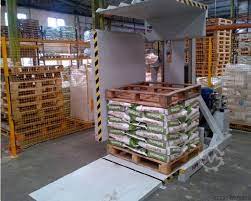
This isn't just about buying a new machine. It's about rethinking a fundamental part of your process. I've walked through countless facilities, from steel mills to food processing plants, and the story is often the same. The bottleneck isn't always the multi-million dollar production line; it's the final step of getting the product onto the right pallet and out the door. Let's break down exactly why this change is happening now and how it directly impacts the bottom line.
What Are the Hidden Costs of Manual Pallet Handling?
You look at your payroll and see the cost of your warehouse team. But is that the true cost of manual handling? I can tell you from decades of experience, it’s not even close. The real expenses are hidden in plain sight. They are the damaged goods that have to be written off, the medical bills for an employee’s back injury, and the overtime paid to other workers to clear a backlog caused by a slow, manual process. These costs don't appear as a neat line item on a budget sheet, so they are easy to ignore. But they add up, and they can be the difference between a profitable quarter and a loss.
The most significant hidden costs of manual pallet handling are product damage during transfer, high rates of costly worker injuries, decreased overall productivity due to process bottlenecks, and high employee turnover. These factors combine to create a substantial financial drain that is often underestimated until a proper analysis is done. A pallet inverter directly targets and reduces every one of these hidden expenses.
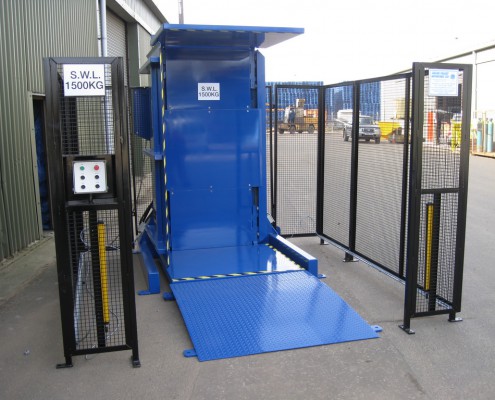
When I started my own factory, I had to watch every single dollar. It taught me to look beyond the obvious. A manager might see a team of five workers manually transferring bags of cement from a production pallet to a shipping pallet. I see the potential for torn bags, inconsistent stacking that leads to load shifts in transit, and the long-term physical strain on those workers. Let's dig deeper into these costs that many owners and managers overlook.
The Financial Drain of Damaged Goods
Every time a product is handled manually, there is a risk of it being dropped, crushed, or mishandled. When you are dealing with heavy, valuable goods like steel coils, paper rolls, or chemicals, a single mistake can be incredibly expensive. It's not just the cost of the lost material. It's the cost of the labor and energy that went into producing it. It's the cost of disposal. It's the cost of the time lost on the production schedule. And perhaps most importantly, it's the potential damage to your reputation if a customer receives a damaged shipment. A pallet inverter handles the entire load as a single, stable unit, virtually eliminating the risk of individual item damage during transfer.
The High Price of Worker Injuries
Manual handling of heavy loads is a leading cause of musculoskeletal disorders (MSDs), such as back injuries and sprains. These are not minor issues. A single serious injury can lead to staggering costs from workers' compensation claims, medical expenses, and potential legal fees. Beyond the direct financial hit, you also lose a trained employee for a period, leading to a scramble to find and train a replacement. This creates instability in your team and can lower morale. An automated system like a pallet inverter removes the physical strain from your employees, creating a safer work environment. This isn't just good for your people; it's a smart business decision that protects you from liability.
How Bottlenecks Cripple Your Plant's Output
Your factory might have the capacity to produce 100 pallets of goods per hour, but what if your manual handling team can only process 50? You have created a massive bottleneck. Trucks are left waiting, finished goods pile up, and your entire operation slows down. This inefficiency has a ripple effect. The production line may have to be stopped, wasting energy and operator time. You might miss shipping deadlines, leading to penalties or lost contracts. A pallet inverter can often perform a transfer in under a minute, ensuring your packaging and shipping speed can keep up with your production capacity.
| Cost Factor | Manual Handling | Pallet Inverter | Financial Impact of Inverter |
|---|---|---|---|
| Product Damage Rate | 2-5% of handled goods | <0.1% of handled goods | Reduces material loss & rework costs |
| Injury Claim Cost | High (Average $40,000 per back injury) | Near-Zero | Eliminates major liability & insurance hikes |
| Handling Time/Pallet | 5-15 minutes (2 workers) | <1 minute (1 operator) | Increases throughput, lowers labor cost |
| Employee Turnover | High due to physical strain | Low | Reduces hiring and training expenses |
How Do Pallet Inverters Directly Boost Operational Efficiency?
Your production line is a finely tuned machine. Every second is calculated. But what happens when your product reaches the end of the line? Does that efficiency continue, or does it hit a wall? I've seen state-of-the-art manufacturing plants where finished goods pile up, waiting for a team to manually restack them onto shipping pallets. Every minute a forklift and its operator wait for that manual task to be completed is a direct hit to your efficiency. You are paying for people and equipment to be idle. This is a problem that can’t be solved by asking people to work harder; it has to be solved by working smarter.
Pallet inverters directly boost operational efficiency by transforming a slow, labor-intensive manual task into a rapid, automated process. They drastically reduce the time required to switch pallets, recover damaged goods, or square up loads, allowing for a continuous flow from production to shipping. This eliminates bottlenecks, frees up labor for more valuable tasks, and maximizes the throughput of the entire facility.
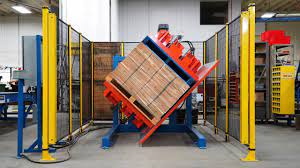
Think of it like a highway. Your production line is a superhighway with cars moving at high speed. The manual packaging area is a single-lane country road. A traffic jam is inevitable. A pallet inverter is like building a new multi-lane off-ramp. It allows the traffic to flow smoothly without slowing down. For a CEO or plant manager focused on metrics like Overall Equipment Effectiveness (OEE), addressing these logistical delays is a massive opportunity. Let’s explore the specific ways this machine impacts your numbers.
From Hours to Minutes: The Speed Advantage
Consider a common task: switching a load from an in-house plastic pallet to a cheaper wooden shipping pallet. Manually, this requires at least two workers to unstack the entire load, piece by piece, and then restack it on the new pallet. This can take anywhere from 10 minutes to over half an hour, depending on the product. A pallet inverter takes the entire load, clamps it securely, rotates it 180 degrees, and allows for the old pallet to be removed and the new one to be placed. The whole process is completed in about 60 seconds by a single operator. If you process 100 pallets a day, you are saving dozens of man-hours every single day. This is a direct and easily measurable boost to productivity.
Seamless Integration into Your Workflow
A modern pallet inverter is not a standalone island of automation. It is designed to be integrated directly into your existing production or conveyor lines. This is something I work on with clients all the time. We design the system so that a pallet can be fed automatically into the inverter, processed, and then fed out onto the shipping line. This creates a truly seamless flow. For a data-driven manager like Javier, this means the pallet transfer becomes a predictable, repeatable, and measurable step in the process, not a chaotic variable. It can be tracked by your Manufacturing Execution System (MES) just like any other part of the production line.
More Than Just Pallet Swapping
The efficiency gains are not just about changing pallets. A pallet inverter is a versatile tool.
- Damage Recovery: What happens when a bag on the bottom of a pallet breaks? Manually, you have to unstack the entire load to replace one bag. With an inverter, you can simply invert the load, replace the broken bag, and invert it back. A 30-minute job becomes a 2-minute job.
- Load Squaring: Loads can shift during transport within the factory. An inverter with pressure-adjustable clamping plates can gently squeeze the load back into a perfect, stable cube, making it safer for stacking and transport.
- Freezer Spacers: In the food industry, spacers are inserted between layers to allow cold air to circulate for rapid freezing. An inverter can insert or remove these spacers quickly and efficiently.
| Task | Manual Method | Pallet Inverter Method | Efficiency Gain |
|---|---|---|---|
| Pallet Exchange | 2 workers, 15 min | 1 operator, 1 min | 90%+ reduction in time & labor |
| Replace Bottom Layer | Unstack entire load (20 min) | Invert, replace, invert (3 min) | Saves ~17 minutes per incident |
| Load Squaring | Manual adjustment (5 min) | Integrated into cycle (0 extra time) | Improves safety and stability instantly |
| Removing Damaged Pallet | Pry bars, manual lift (10 min) | Invert and exchange (1 min) | Prevents further product damage |
Why is Russia's Unique Economic Climate Accelerating This Shift?
Every market has its own pressures, but the situation in Russia today is unique. There's a strong government push for industrial self-sufficiency, often called import substitution. At the same time, international logistics can be complex, and the labor market has its own set of challenges. In this environment, manufacturers can't afford to be inefficient. They are being forced to innovate and optimize not just to grow, but to survive. Relying on old methods of manual handling is a liability they can no longer carry.
Russia's unique economic climate is accelerating the adoption of pallet inverters because these machines directly address the country's key industrial goals. They increase productivity to support import substitution, reduce dependence on manual labor in a tight market, and enhance logistical independence by allowing for rapid switching between internal and external pallet standards. This makes local manufacturing more resilient and cost-effective.
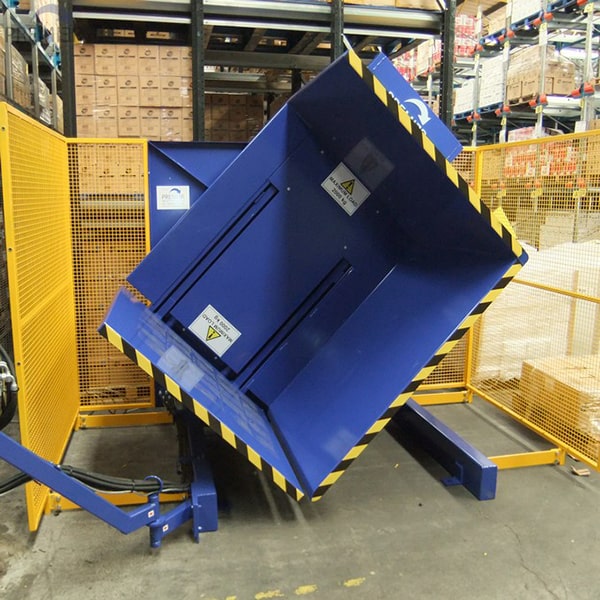
I have spoken with engineers and plant managers from the region, and a clear picture emerges. They are under immense pressure to increase output without increasing costs. They need to make their operations lean, robust, and less dependent on external factors. Automation isn't a luxury; it has become a core part of their strategy for resilience. Let's look at the specific drivers in the Russian context that make a machine like a pallet inverter such a logical investment.
Driving Productivity for Import Substitution
The "Made in Russia" initiative is a powerful force. To replace imported goods, local factories must be able to produce high-quality products at a competitive price and in sufficient volume. This requires a massive leap in productivity. You can't achieve this by simply hiring more people to manually stack boxes. You need to automate repetitive, non-value-added tasks. A pallet inverter removes a major bottleneck in the final stages of production and packaging. By speeding up the pallet transfer process, it allows the entire plant to increase its effective output, helping to meet the demands of the local market and reduce reliance on foreign goods. It's a key piece of the puzzle for achieving industrial sovereignty.
Navigating Labor Market and Logistical Hurdles
Like many industrial nations, Russia can face shortages of skilled and unskilled labor in certain regions. Relying on a large manual handling workforce is risky when the labor pool is unpredictable or wages are rising. Automating this task with a pallet inverter reduces this dependency. It allows a factory to maintain or increase its output with a smaller, more stable, and higher-skilled workforce focused on operating and maintaining equipment rather than performing strenuous manual labor. Furthermore, when dealing with complex international or domestic supply chains, the ability to quickly and cheaply transfer goods from your high-quality in-house pallets to standardized shipping pallets (like CHEP, PECO, or simple one-way pallets) is a huge advantage. It provides flexibility and cuts down on pallet rental or loss costs, which is a key concern when logistics are challenging.
A Strategic Move Towards Operational Resilience
In an economic climate where stability is not guaranteed, building a resilient operation is paramount. What does that mean in practice? It means reducing variables and points of failure. Manual handling is a massive variable. It's subject to human error, injury, and inconsistency. An automated system like a pallet inverter is predictable. It performs the same task, in the same way, in the same amount of time, every single time. This predictability is golden for a plant manager. It allows for better planning, more accurate forecasting, and a smoother, more reliable operation that is less vulnerable to shocks in the labor market or supply chain.
| Economic Driver in Russia | Impact on Manufacturers | How Pallet Inverters Provide a Solution |
|---|---|---|
| Import Substitution | Pressure to increase local production volume and speed | Increases throughput at the packaging/shipping stage, removing bottlenecks. |
| Labor Market Volatility | Difficulty finding/retaining manual labor; rising wages | Reduces the number of workers needed for handling tasks. |
| Supply Chain Complexity | Need for flexibility in pallet types (internal vs. shipping) | Allows for instant, low-cost transfer between different pallet types. |
| Push for Modernization | Drive to adopt modern, efficient technologies | Represents a tangible step towards a fully automated "Industry 4.0" facility. |
What Safety and Compliance Issues Do Pallet Inverters Solve?
As an engineer, I am focused on efficiency. But as a factory owner, I learned very quickly that nothing can shut down your operation faster than a serious safety incident. The well-being of your employees is your first responsibility. Beyond that, a poor safety record is a massive financial and reputational risk. Government regulators are enforcing stricter standards, and insurance companies are unforgiving. The simple act of manually lifting, twisting, and carrying heavy items is one of the biggest risks in any industrial setting. You can train people and provide gear, but you cannot eliminate the fundamental risk of the task itself.
Pallet inverters are a powerful engineering control that solves critical safety issues by completely eliminating the need for manual lifting and handling of heavy, palletized loads. This drastically reduces the risk of musculoskeletal injuries, the most common and costly workplace complaint. By automating the task, they ensure compliance with stringent national and international occupational health and safety standards, protecting both the workers and the company from liability.
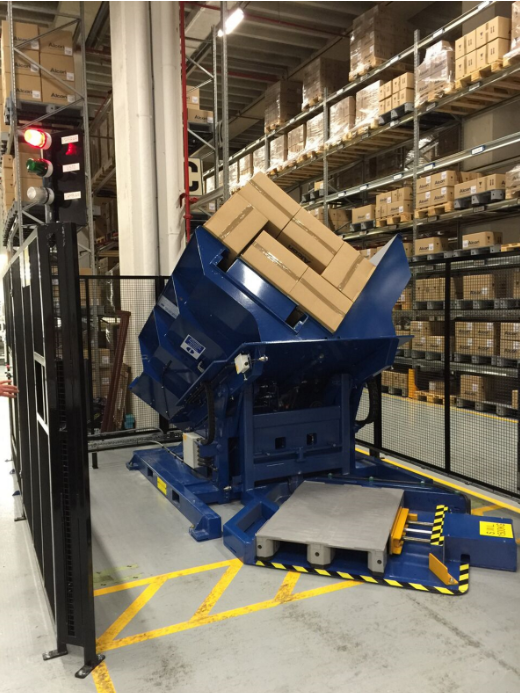
I remember visiting a client's facility where they had two lost-time injuries in one month from workers trying to manually restack a fallen pallet of chemical drums. The direct cost was significant, but the indirect cost was worse. The entire team was demoralized, and an investigation from the safety authority was looming. This is the kind of problem that keeps a CEO up at night. The solution isn't more training on "safe lifting." The solution is to get rid of the dangerous task altogether.
Eliminating the Root Cause of Back Injuries
The vast majority of workplace injuries in manufacturing and logistics are musculoskeletal disorders (MSDs), with back injuries being the most frequent and severe. These injuries are caused by repetitive strain, heavy lifting, and awkward postures—the exact motions involved in manually handling a pallet load. A pallet inverter takes the human out of this hazardous equation. The machine bears the entire weight of the load. The operator simply pushes buttons from a safe distance. By removing the physical act of lifting, you are not just reducing the risk; you are eliminating it at its source. This is the most effective form of safety improvement you can implement.
Meeting and Exceeding Compliance Standards
Every country has its own set of occupational health and safety laws. In Russia, this would be the GOST standards, while internationally, you have guidelines from bodies like ISO and OSHA. These regulations all put a heavy emphasis on employers' responsibility to provide a safe workplace. Using a pallet inverter is a clear, demonstrable action that shows you are taking this responsibility seriously. It proves you have identified a major hazard (manual handling) and implemented an effective engineering control to mitigate it. This is a powerful point to have in your favor during a safety audit or inspection. Modern pallet inverters are built with safety features like light curtains, pressure sensors, and physical guarding to meet the highest global standards.
Fostering a Culture of Safety and Stability
When you invest in equipment that protects your employees, you send a powerful message. It shows that you value them as people, not just as labor. This builds trust and loyalty, which can significantly reduce employee turnover. A safer workplace is a happier and more productive workplace. Workers are not hesitant to perform tasks because they fear injury. Morale improves. You build a more stable, experienced team that is invested in the company's success. This cultural benefit, while harder to quantify than injury costs, has a real and positive impact on your long-term profitability.
| Hazard Assessment | Manual Handling Method | Pallet Inverter Method |
|---|---|---|
| Hazard | Lifting heavy, awkward loads. Repetitive motion. | Automated mechanical process. |
| Associated Risks | High risk of back sprains, hernias, crushed fingers/toes, muscle strains. | Risks are virtually eliminated. Operator is not in contact with the load. |
| Risk Level | HIGH | LOW |
| Compliance Status | Often fails to meet modern ergonomic standards. High liability. | Exceeds all major safety standards (e.g., ISO, GOST). Low liability. |
Conclusion
Replacing manual handling with pallet inverters is a strategic move for Russian manufacturers to cut costs, boost efficiency, and improve safety, making their operations more competitive and resilient.





